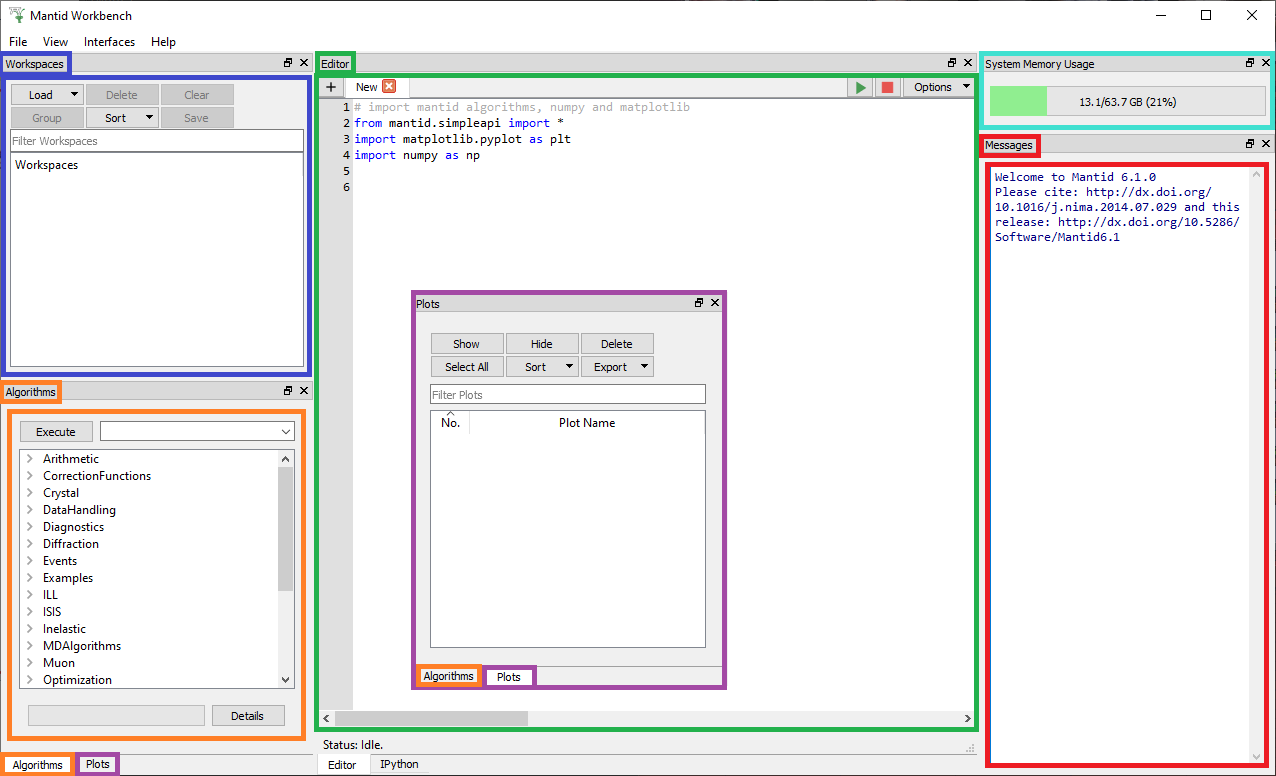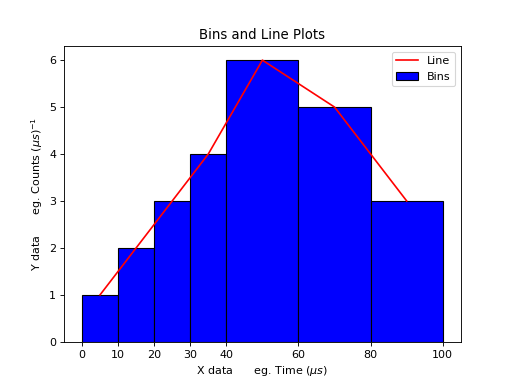\(\renewcommand\AA{\unicode{x212B}}\)
When you open Mantid Workbench it will look something like this:

As a quick introduction, the main window contains these Toolboxes:
Note to find out what Mantid version you are using, look at the first message in the Messages Box. You can see I’m using Mantid 6.1.0.
A workspace is data stored within Mantid. It will appear in the Workspaces Toolbox. When you load a data file, it will create a Workspace. Likewise you can save a Workspace to a file. Many of the features of Mantid perform operations on Workspaces. There are even different types of Workspaces in Mantid, which hold data in different formats.
A usual Workspace consists of a number of spectra, each cut into blocks called bins (more about spectra later). Mantid sums the number of counts in each bin and the line we plot connects the top of these bins.
(Note that the bins can have different widths (defined by the instrument set-up)), such as below the bin-widths change from 10 to 20).
(Source code, png, hires.png, pdf)
